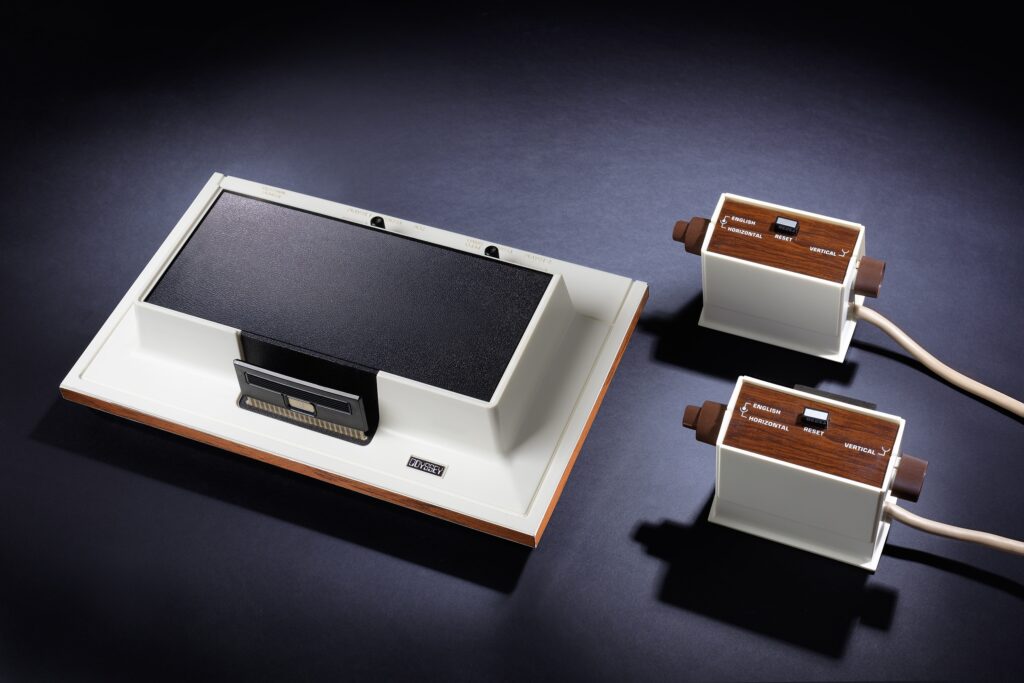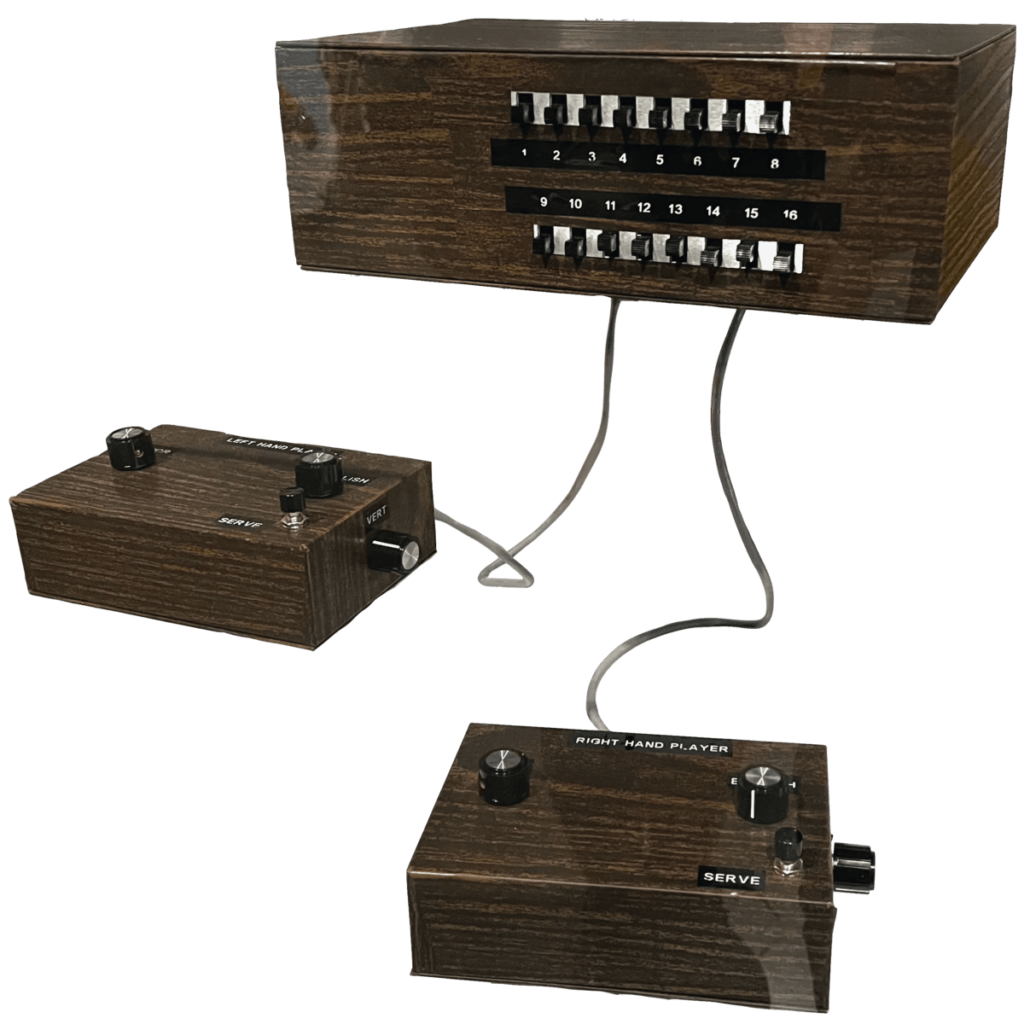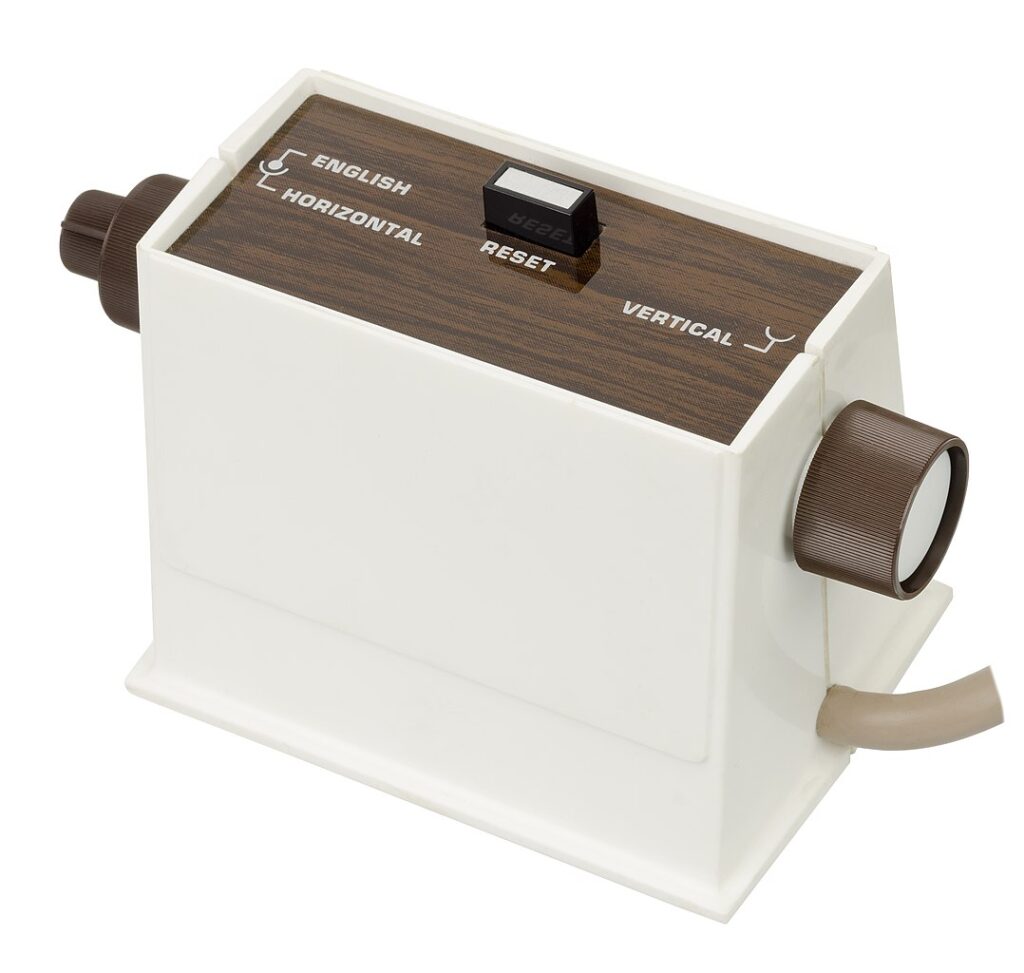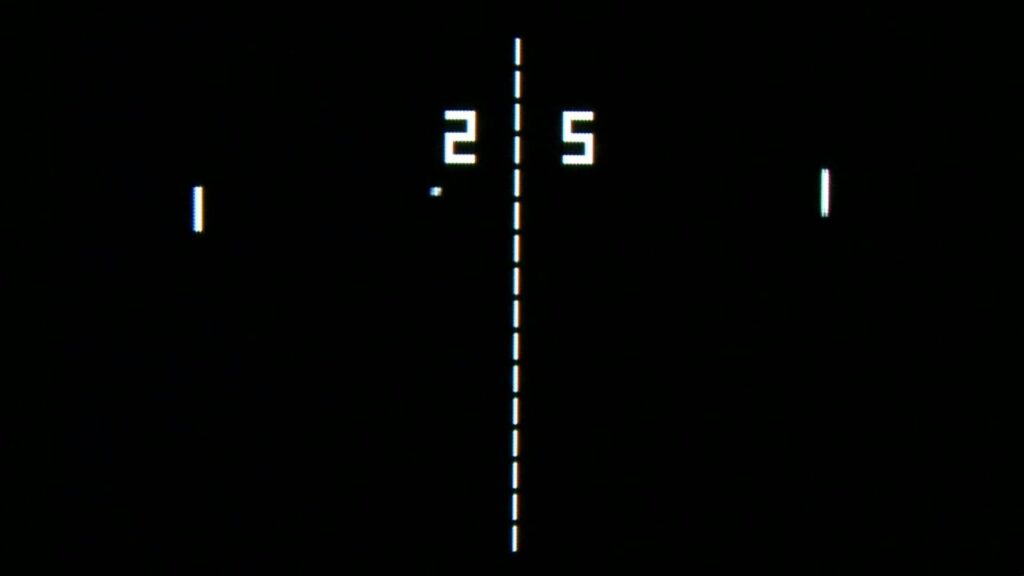If you’re reading this article, you’ve probably heard of the PlayStation, the Xbox, the Atari, and so on. But have you ever wondered where it all began? What was the first video game console that kicked off this multi-billion segment of the entertainment industry?
We’ve already covered the different generations of consoles in our awesome series, but this time we’re going way back to the beginning. We’re talking about the grand-grandfather, the console that started it all, how it came to be, its features, public reception, and how it paved the way for the gaming world of today!
So, what was the first video game console?

The very first home video game console was the Magnavox Odyssey. It hit the shelves back in 1972, long before Pac-Man gobbled up your parents’ quarters in arcades or Mario jumped onto the scene.
This pioneering console was a far cry from the elegant and powerful machines we have today – it had simple graphics, used interchangeable game cards, and even relied on plastic overlays to add some color to the screen.
But how did this groundbreaking invention come to be? Well, we can thank a brilliant engineer called Ralph Baer for that. He imagined an interactive television, a way for people to do more than just passively watch whatever was airing on the screen. He believed that the TV should also be a platform for entertainment, allowing viewers to participate and control the action.
Back in the mid-1960s, Baer started experimenting with ideas for a gaming device. He worked at a company called Sanders Associates, where he was tasked with developing advanced electronics for the military. In his spare time, he would tinker with his own projects, guided by a hunger for innovation and a belief that his vision could soon become real.
One of his early prototypes, nicknamed the “Brown Box,” was a bulky homemade device that could run simple games like ping-pong and chase. It used transistors and other electronic components to generate simple graphics on a TV screen.

He faced numerous challenges in developing this prototype (including limited technology and skeptical colleagues), but with sheer perseverance, he kept refining his designs and overcoming technical hurdles one by one.
Baer created custom controllers, experimented with different game concepts, and even developed a light gun that could be used to interact with targets on the screen. His breakthroughs laid the foundation for home consoles, an invention that would prove pivotal for the gaming industry.
In 1971, Baer presented the Brown Box to various manufacturers, including Magnavox, which saw the device’s potential and partnered with Baer to bring it to market as the Magnavox Odyssey, marking the start of the first generation of consoles.
What were Magnavox Odyssey’s features?
The Magnavox Odyssey was a pretty unique console for its time. It didn’t have a built-in microprocessor like later consoles. Instead, it used simple circuits to create basic graphics on the TV screen.
The graphics were black and white, and the console didn’t even have sound. And, to add some color, players had to use plastic overlays that stuck to the screen.
Games came on cartridges that were plugged into the console – and players controlled the action using two simple controllers that had knobs for moving objects horizontally and vertically, as well as a reset button.

Magnavox Odyssey sales and public reception
Magnavox started selling the Odyssey in 1972, hoping that people would flock to their stores to get their hands on this brand-new type of entertainment. They sold the console exclusively through their dealers and relied on them to advertise it locally.
At first, things looked promising, as people were intrigued by the idea of playing video games at home. Thanks to it, Magnavox had to increase its production to meet the demand, selling 69,000 units in the first year.
But the Odyssey’s success was short-lived. The console’s simple graphics, lack of sound, and limited game variety failed to capture a wider audience. By the time the Odyssey was discontinued in 1975, Magnavox had sold around 350,000 units.
Definitely not a bad number for the first home console, but it wasn’t the massive hit they had hoped for.
Several factors contributed to the Odyssey’s limited success. One major issue was the misconception that it could only work on Magnavox televisions. Many people didn’t realize that the Odyssey could be hooked up to any TV. Also, the games themselves were quite simple compared to the arcade games that were becoming popular at the time.
Despite that, the very first console paved the way for the future of gaming. It showed that people were interested in playing games from the comfort of their homes, and it set the stage for what would follow in the coming decades.
What games did it have?
The Magnavox Odyssey came with a pack of 12 different game cartridges containing a total of 28 games. These games were very simple compared to the games we play today, featuring basic graphics and relying on players using Odyssey’s built-in overlays and their imaginations to fill in the blanks.
Some of the most popular games included Table Tennis, a simple simulation of ping-pong; Ski, where players raced down a snowy slope; Haunted House, a rudimentary hide-and-seek game; and Cat and Mouse, a chase game in which players control a cat trying to catch a mouse.
While these games might seem primitive by today’s standards, they were groundbreaking for their time. They offered a new way to interact with television and provided a glimpse of the exciting possibilities that lay ahead for video games.
In fact, Atari’s hugely popular arcade game Pong was inspired by the Odyssey’s Table Tennis game. This connection helped drive sales of the Odyssey, as people recognized the similarities between the two games.

Closing thoughts: the Magnavox Odyssey’s lasting impact
So, what was the first video game console? The answer, as we’ve discovered, is the Magnavox Odyssey. To recap, this groundbreaking invention, dreamed up by Ralph Baer in the 1960s, brought video games into our homes for the very first time.
While its simple graphics, lack of sound, and limited game variety might seem primitive compared to today’s gaming experiences, the Odyssey was a revolutionary product that paved the way for an entire industry.
The console’s journey wasn’t without its challenges, though. It faced several legal battles, with Magnavox fiercely defending its patents and suing companies trying to copy its technology. These lawsuits helped establish the legal framework for the video game industry, shaping how games were developed, licensed, and sold for years to come.
Despite its limited commercial success, the Odyssey’s impact on the gaming world is undeniable. It introduced the concept of interchangeable game cartridges, allowing players to choose from a variety of gaming experiences. It pioneered the use of controllers with multiple buttons and joysticks, laying the foundation for the complex controller designs we use today.
And perhaps most importantly, it proved that there was a market for home video gaming, inspiring countless other companies to enter the fray and fueling the video game revolution that continues to this day.

Are you feeling inspired?
Does the story of the Magnavox Odyssey, with its simple yet revolutionary design, inspire you?
Perhaps you’re dreaming of creating a retro-inspired game that captures the spirit of those early gaming experiences. Or maybe you have a groundbreaking idea for a modern game that will push the boundaries of what’s possible – what’s in your mind?
At Main Leaf, we’re passionate about bringing those gaming visions to life. We’re a team of experienced developers and artists who specialize in crafting unique and engaging games across various platforms.
Whether you’re an indie developer with a retro heart or a studio looking to create the next big hit, we’re here to help. Contact us today to discuss your upcoming masterpiece!

